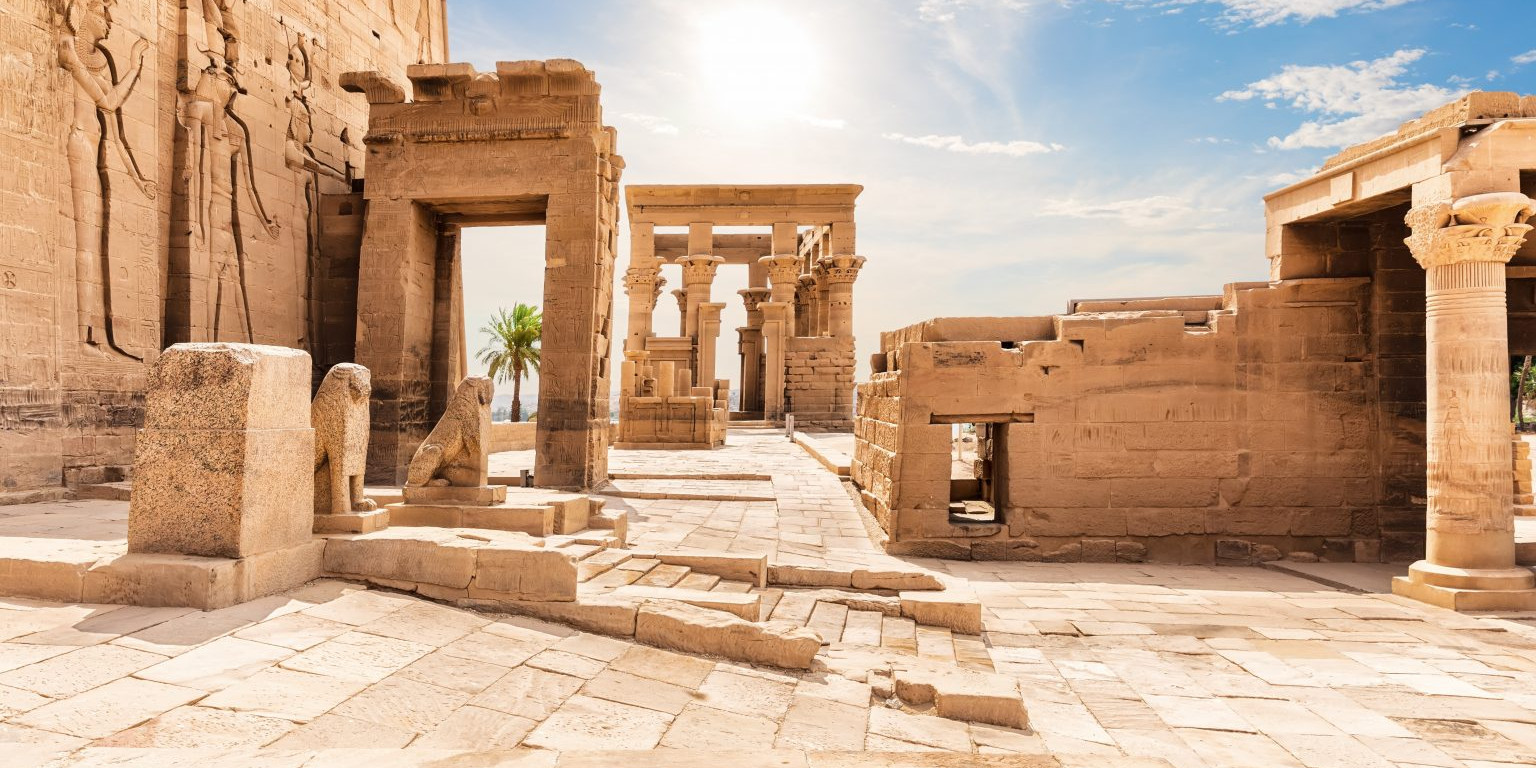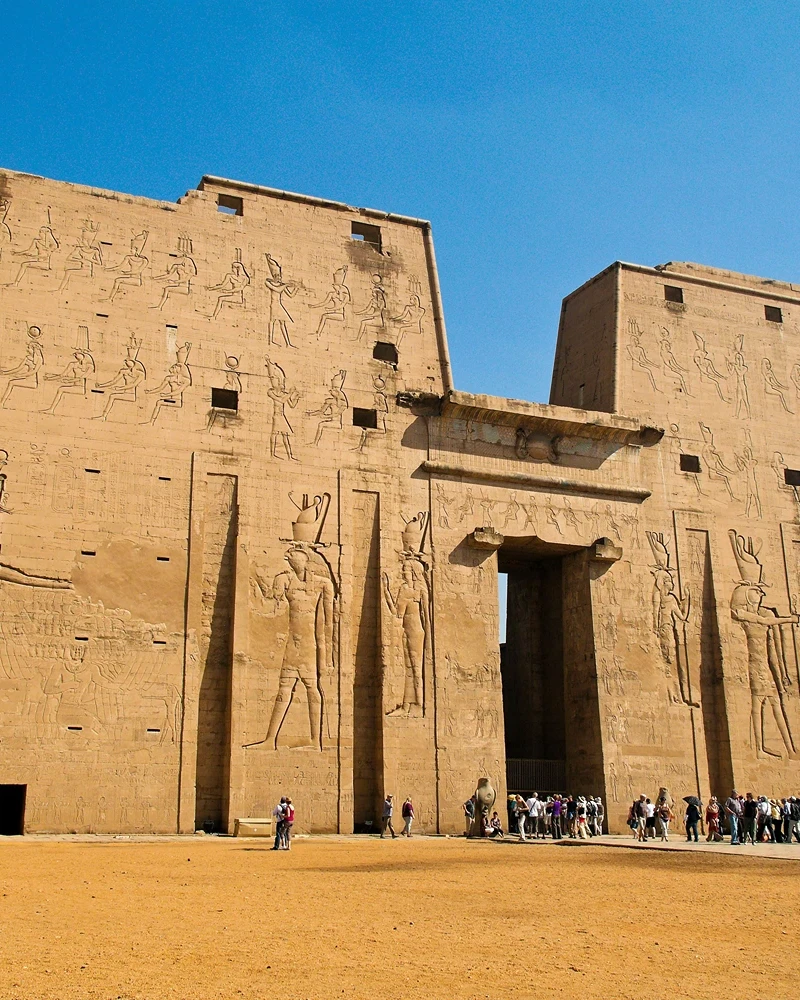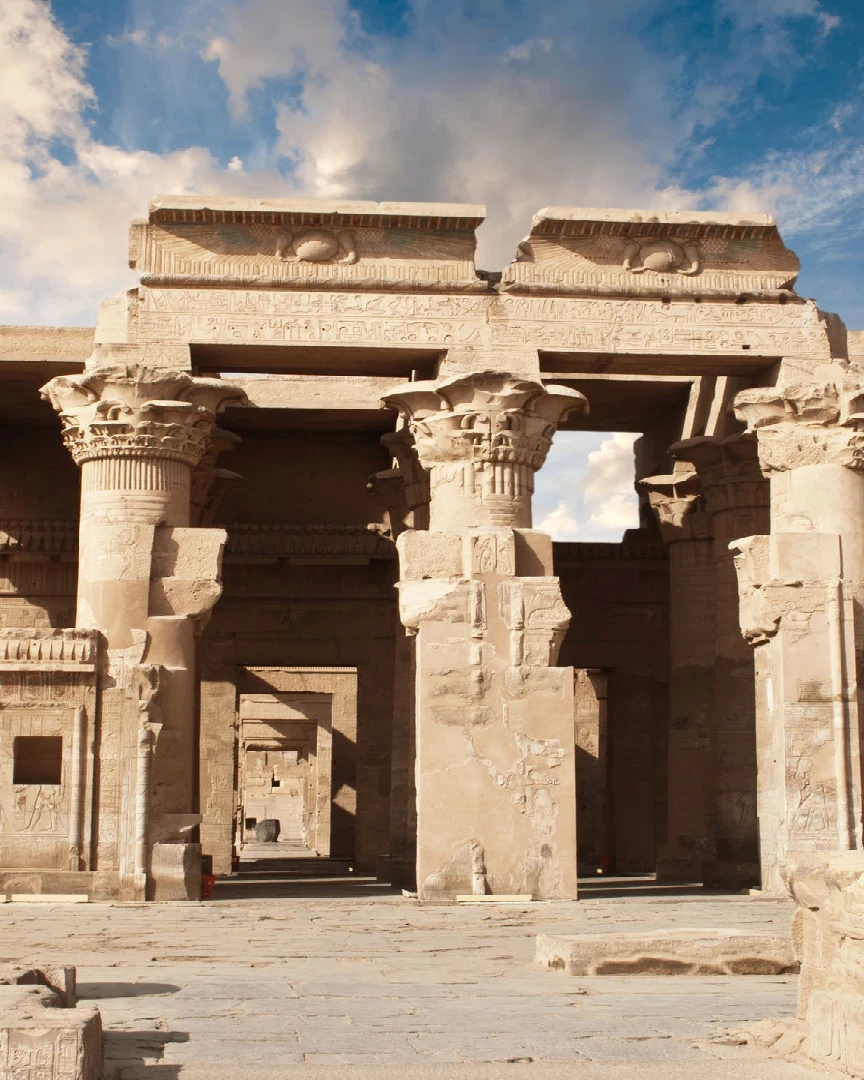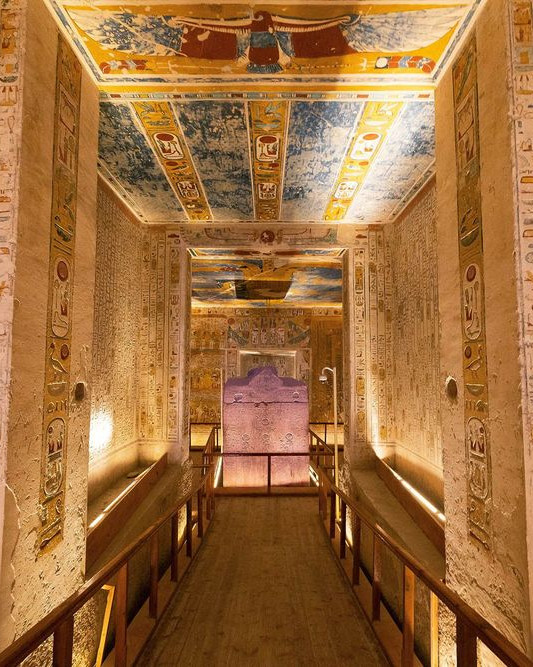Did you know one of Egypt’s oldest, most revered temples experienced a near brush with oblivion? The Philae Temple Complex, originally situated on Philae Island, faced submersion due to the construction of the Aswan High Dam in the 1960s. Fortunately, a remarkable relocation project saved these ancient relics, transferring them to Agilkia Island. This article will delve into the rich history of Philae, tracing its origins, significance, and the monumental efforts that preserved its legacy. Discover how this ancient gem continues to captivate scholars and travelers alike.
History of the Philae Temple Complex
The Philae Temple Complex, originally situated on Philae Island, was constructed around 690 BC. It was dedicated to Isis, the Egyptian goddess of healing and magic. The temple became a major center for the worship of Isis, attracting pilgrims from across the ancient world. Its architectural design and intricate carvings reflect the religious significance and artistic achievements of ancient Egyptian civilization.
In the 1960s, the construction of the Aswan High Dam posed a significant threat to the Philae Temple Complex. The rising waters of the Nile River threatened to submerge the original site, prompting an urgent need for relocation. Funded by UNESCO and managed by French Egyptologist Christiane Desroches-Noblecourt, the temple complex was meticulously dismantled and moved to the nearby Agilkia Island. This monumental relocation project preserved the temple’s intricate details and ensured its survival for future generations.
The Philae Temple Complex holds immense historical significance as one of the last strongholds of ancient Egyptian religion before the spread of Christianity. Its preservation and relocation underscore the global effort to protect cultural heritage. Today, the Philae Temple serves as a UNESCO World Heritage site, attracting visitors from around the world who seek to experience its historical and architectural splendor.
Key dates and events in the history of the Philae Temple Complex:
- 690 BC: Construction of the Philae Temple Complex begins.
- 1960s: Threat from the Aswan High Dam prompts relocation efforts.
- 1964: UNESCO launches the relocation project.
- 1980: Completion of the relocation to Agilkia Island.
- Present: The Philae Temple Complex is recognized as a UNESCO World Heritage site.
Architectural Features of the Philae Temple Complex
The Philae Temple Complex showcases a diverse range of architectural elements integral to ancient Egyptian architecture. The site features grand pylons, spacious courtyards, towering columns, and elaborate hypostyle halls. These elements collectively reflect the religious and cultural significance of the complex. The pylons serve as monumental gateways, leading to the various structures within the temple. Courtyards provide open spaces for ceremonies and gatherings, while hypostyle halls, supported by intricately decorated columns, create a sense of grandeur and reverence.
Notable structures within the complex include the Temple of Isis, the Kiosk of Trajan, and the Temple of Hathor. The Temple of Isis is renowned for its large courtyard and hypostyle hall adorned with detailed carvings and hieroglyphics. The Kiosk of Trajan, an impressive monument built by Emperor Trajan, features 14 columns and is often referred to as “Pharaoh’s Bed.” The Temple of Hathor stands out with its lively representations of the goddess of love and joy, featuring columns decorated with flute players and joyful scenes. Each structure within the Philae Temple Complex offers unique architectural and artistic features, contributing to its status as an ancient Egyptian gem.
| Structure | Key Features |
| Temple of Isis | Large courtyard, hypostyle hall, detailed carvings and hieroglyphics |
| Kiosk of Trajan | 14 columns, referred to as “Pharaoh’s Bed” |
| Temple of Hathor | Columns with flute players, joyful scenes |
Religious Significance and Practices at Philae
The Philae Temple Complex was a pivotal center for the worship of Isis, Osiris, and Horus. As one of the last bastions of ancient Egyptian religion before the advent of Christianity, the temple held immense religious significance. Devotees from various regions flocked to Philae to pay homage to these deities, particularly Isis, the goddess of healing and magic. The temple’s architecture and inscriptions reflect its importance as a religious sanctuary, with numerous reliefs depicting the gods and their associated myths.
Rituals and ceremonies at Philae were integral to the religious life of the community. Daily rituals included offerings, prayers, and recitations aimed at appeasing the gods and ensuring their favor. Priests performed these rituals with precision, adhering to ancient traditions. Ceremonies often involved processions, music, and dance, creating a vibrant and sacred atmosphere. The temple’s courtyards and halls were designed to accommodate these elaborate ceremonies, emphasizing the grandeur and sanctity of the practices conducted within.
Key religious practices carried out at the Philae Temple Complex:
- Daily offerings and prayers to Isis, Osiris, and Horus
- Processional ceremonies involving priests and devotees
- Festivals celebrating significant events in the mythologies of the gods
- Rituals for healing and protection, invoking the power of Isis
Festivals and religious events at Philae were significant occasions drawing large crowds. The “Feast of Isis” was one such event, celebrating the goddess’s mythical journey to find the body of Osiris. This festival included reenactments of the myth, communal feasts, and offerings. Another notable event was the “Navigation of the Gods,” a ceremonial procession by boat, symbolizing the gods’ journey across the waters. These festivals not only reinforced religious beliefs but also fostered a sense of community among the worshippers.
Tourist Information for Visiting the Philae Temple Complex
The best time to visit the Philae Temple Complex is during the cooler months from October to April. Daytime temperatures are more comfortable, allowing visitors to explore the site without the intense heat of the summer months. The temple is typically open from early morning to late afternoon, giving ample time to immerse in the historical and architectural marvels. It is advisable to arrive early in the day to avoid crowds and make the most of the cooler morning temperatures.
The Philae Temple Complex is accessible by boat from the Aswan mainland. Visitors can hire a motorboat from the Aswan waterfront, with the journey taking approximately 10 minutes. Boats are readily available and often included in guided tours, which can enhance the experience with detailed historical and cultural insights. Once on Agilkia Island, where the temple is now located, pathways and signs guide visitors through the various structures and landmarks.
Ticket prices for visiting the Philae Temple Complex are around $25 per person. It is recommended to bring cash for ticket purchases and boat rides, as card payment options may be limited. Visitors should also consider hiring a local guide for a more informative experience. Special considerations include wearing comfortable walking shoes, bringing sun protection such as hats and sunscreen, and carrying water to stay hydrated. Photography is generally allowed, but it is courteous to ask for permission before taking pictures of any local people or private ceremonies.
Key tourist tips for visiting the Philae Temple Complex:
- Visit during the cooler months from October to April
- Arrive early to avoid crowds and heat
- Access the temple via a motorboat from Aswan
- Bring cash for tickets and boat rides
- Hire a local guide for a richer experience
- Wear comfortable shoes and bring sun protection
Key Monuments and Structures within the Philae Temple Complex
The Temple of Isis at Philae is the centerpiece of the complex and is renowned for its grand entrance pylon, which stands 18 meters high and spans 45 meters wide. This pylon is intricately decorated with figures of Ptolemy XII portrayed as a pharaoh, performing rituals and offering sacrifices to the gods. Inside, the temple features a large courtyard and a hypostyle hall adorned with detailed carvings and hieroglyphics, showcasing the artistic and religious dedication of ancient Egyptian craftsmen. The Temple of Isis served as a major pilgrimage site and was central to the worship of the goddess Isis.
The Temple of Hathor is another significant structure within the Philae Temple Complex. It is particularly noted for its lively and joyful representations of Hathor, the goddess of love and music. The columns in this temple are beautifully decorated with images of flute players and scenes of festivity, reflecting the joyful aspects of the goddess. These decorations provide a vibrant contrast to the more solemn and formal representations found in other parts of the complex, highlighting the diverse artistic styles of ancient Egyptian architecture.
The Kiosk of Trajan, constructed by Emperor Trajan in 106 AD, is a notable monument within the Philae Temple Complex. This structure, often referred to as “Pharaoh’s Bed,” features 14 columns that support a roofless structure. Each column is intricately carved with floral motifs and scenes depicting the emperor making offerings to the gods. The Kiosk of Trajan stands out due to its unique architectural style and its representation of Roman influence on Egyptian culture. It remains one of the most photographed and admired structures within the complex.
Major monuments within the Philae Temple Complex:
- Temple of Isis
- Temple of Hathor
- Kiosk of Trajan
Preservation and Restoration Efforts at the Philae Temple Complex
The Philae Temple Complex was relocated in the 1960s to Agilkia Island due to the construction of the Aswan High Dam. The rising waters of the Nile River threatened to submerge the original site on Philae Island. To prevent the loss of this historical treasure, an urgent relocation project was initiated. The relocation, funded by UNESCO, involved meticulous dismantling and reassembling of the temple’s structures on higher ground. This effort not only preserved the intricate architectural details but also maintained the temple’s historical integrity. The project was a monumental task, requiring collaboration from multiple countries and experts in various fields.
UNESCO played a critical role in the preservation and restoration efforts of the Philae Temple Complex. The organization spearheaded the international campaign to save the temple, highlighting its cultural and historical significance. French Egyptologist Christiane Desroches-Noblecourt led the project, ensuring that the relocation was carried out with precision and care. The successful relocation and restoration of the Philae Temple Complex set a precedent for future preservation efforts worldwide. Today, the temple is recognized as a UNESCO World Heritage site, which guarantees its ongoing protection and maintenance. The designation ensures that the Philae Temple will continue to be safeguarded for future generations to appreciate and study.
Key preservation and restoration milestones for the Philae Temple Complex:
- 1960s: Threat from the Aswan High Dam initiates relocation efforts
- 1964: UNESCO launches the relocation project
- 1980: Completion of the relocation to Agilkia Island
- Present: Recognized as a UNESCO World Heritage site
Final Words
The Philae Temple Complex stands as a testament to ancient Egyptian engineering and religious dedication.
From its original construction dedicated to Isis to its relocation due to the Aswan High Dam, the temple has weathered the sands of time.
Architecturally rich with structures like the Temple of Isis and the Kiosk of Trajan, it offers invaluable insights into ancient practices and artistry.
As a UNESCO World Heritage site, the ongoing preservation efforts ensure its historical and cultural legacy endures.
Visiting the Philae Temple Complex offers a unique glimpse into ancient Egypt’s grandeur and spiritual devotion.
Top Attractions
Why would an ancient civilization dedicate 180 years to…
Can a single structure embody the legacies of two powerful…
Why did the ancient Egyptians choose a secluded desert…





